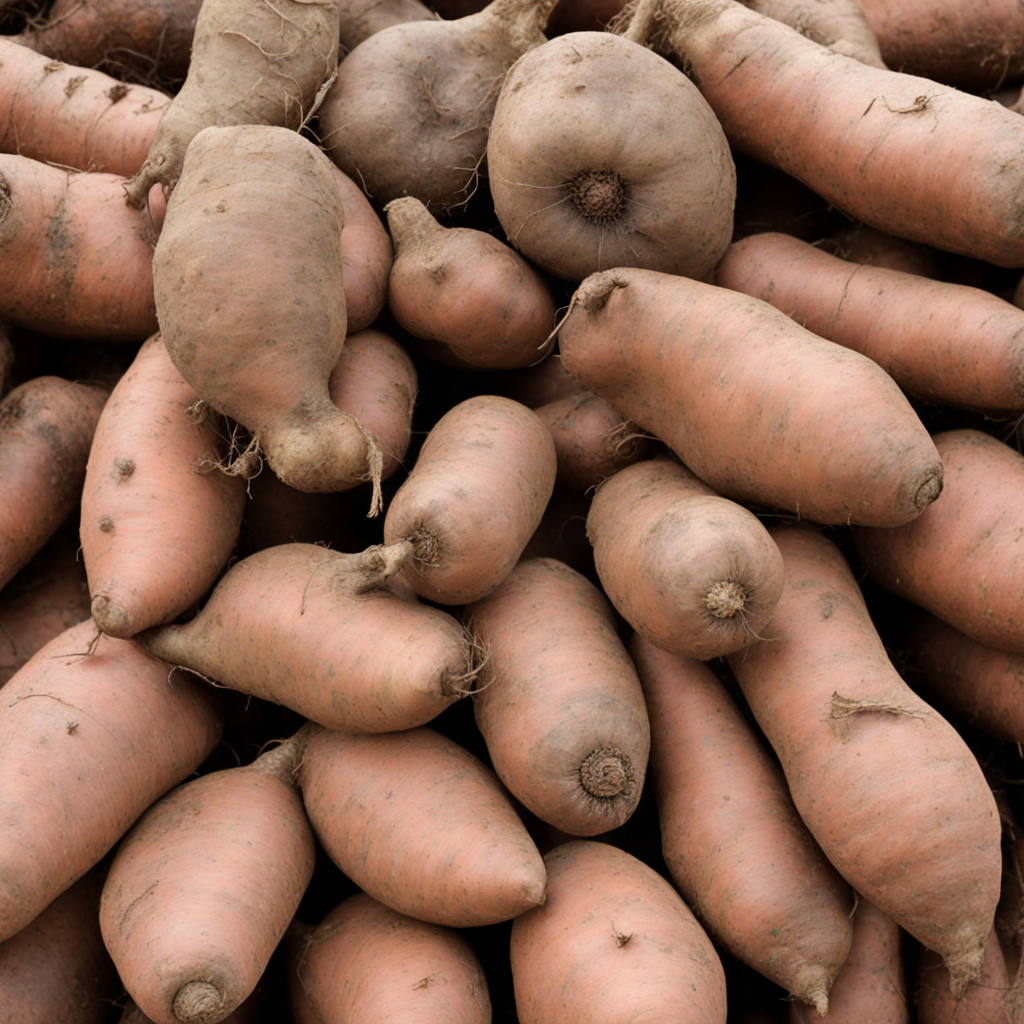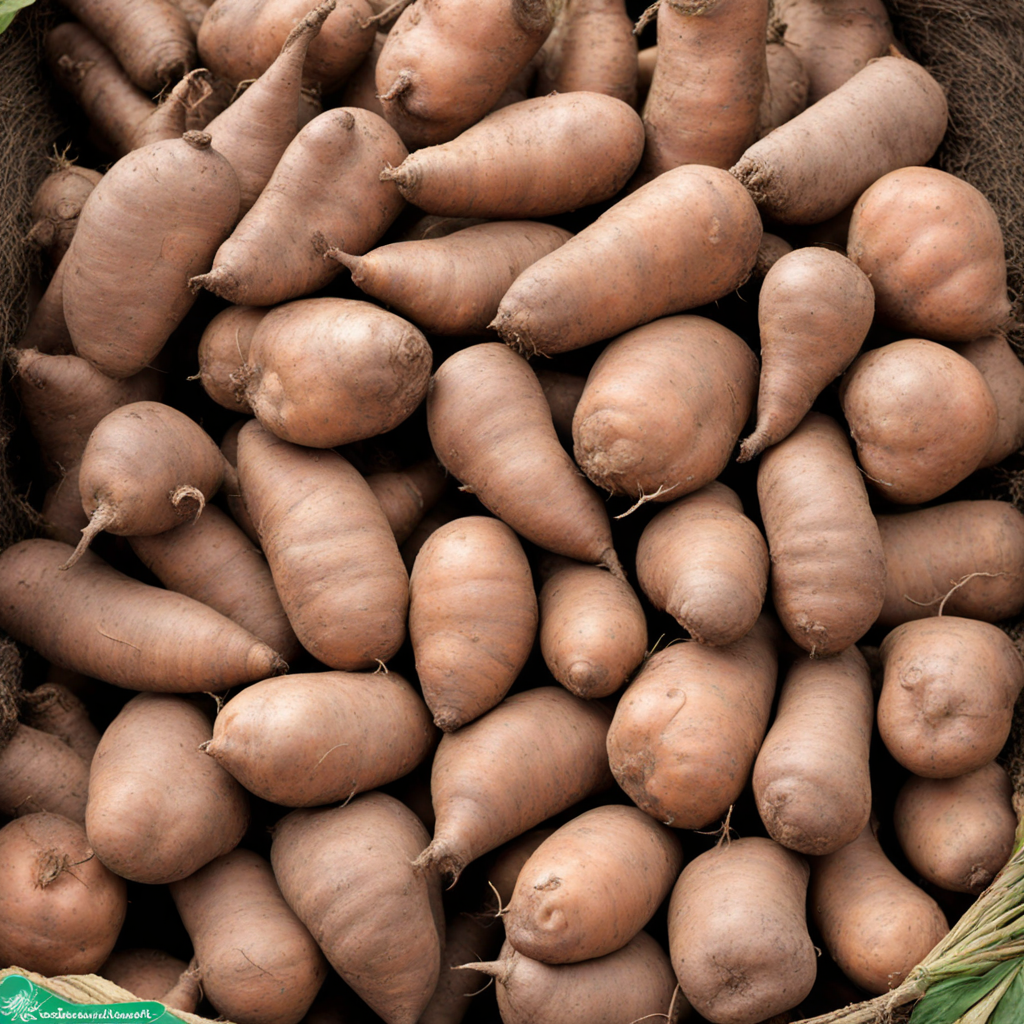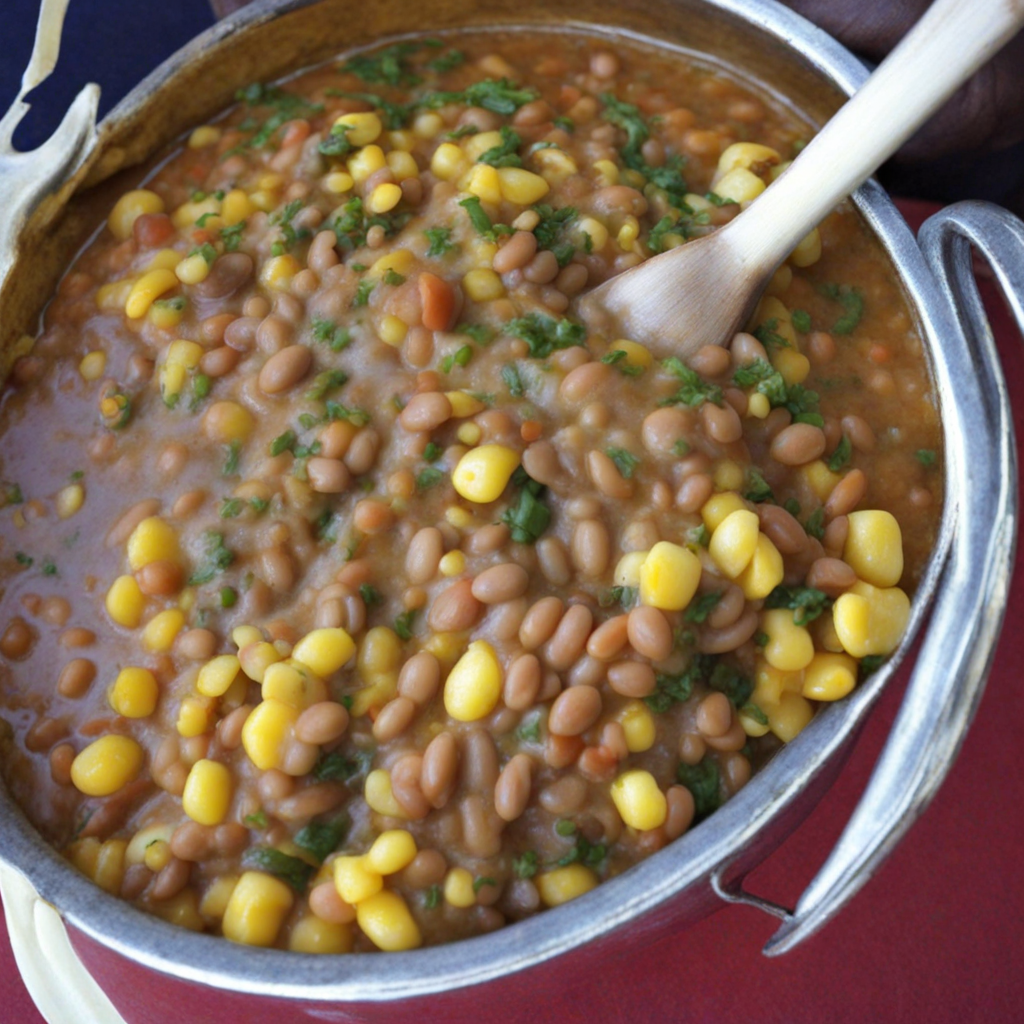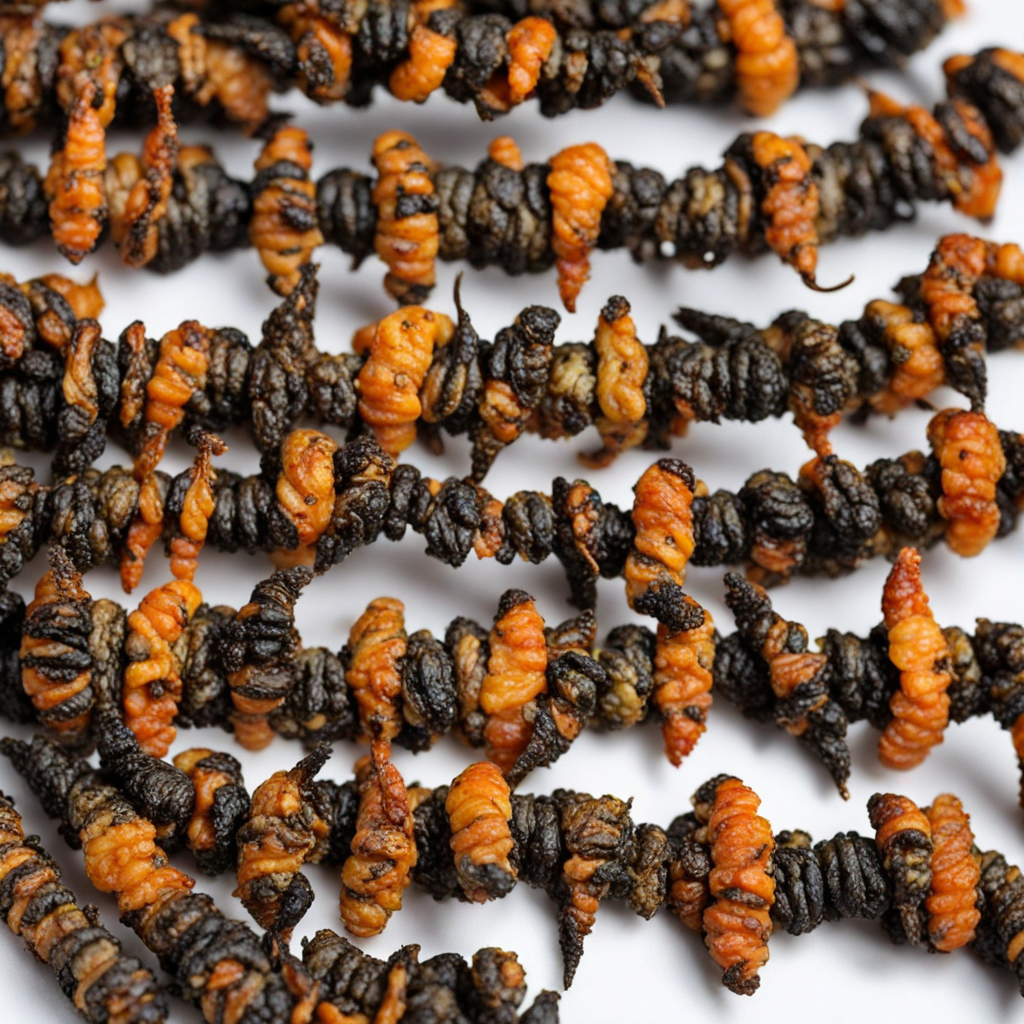Madumbe
Madumbe, also known as taro, is a starchy root vegetable that holds a significant place in Zimbabwean cuisine. Its unique texture and earthy flavor make it an intriguing addition to various dishes. When cooked, madumbe has a creamy consistency that can be compared to potatoes but with a slightly nuttier taste. It can be boiled, steamed, or roasted, allowing it to absorb flavors from spices and accompanying ingredients, making it versatile enough for both savory and sweet preparations. In traditional Zimbabwean households, madumbe is often served as a staple side dish, pairing beautifully with meats, stews, and vegetable dishes. The root is typically peeled, diced, and then prepared in a similar fashion to other root vegetables. Its ability to soak up flavors makes it a perfect canvas for rich sauces and spices, providing a comforting and hearty meal. Additionally, madumbe can be mashed or pureed, creating a delightful alternative to mashed potatoes, often enhanced with butter or spices for added depth. Beyond its savory applications, madumbe can also be utilized in desserts. Its subtle sweetness allows it to shine in dishes such as puddings or cakes, where it can be combined with coconut milk, sugar, and vanilla for a delightful treat. This duality in flavor profiles showcases madumbe's versatility, making it an excellent ingredient for those eager to explore new tastes and culinary experiences. With its rich cultural significance and adaptability in the kitchen, madumbe is a must-try for any food enthusiast looking to expand their palate.
How It Became This Dish
The History of Madumbe: A Culinary Treasure from Zimbabwe #### Introduction Madumbe, known scientifically as *Colocasia esculenta*, is a starchy tuber that has been a staple food in Zimbabwe and across many parts of Africa for centuries. Often referred to as taro, it is recognized for its versatility, nutritional value, and unique flavor. This root vegetable holds great cultural significance and has a rich history that reflects the agricultural practices, culinary traditions, and social structures of the communities that cultivate it. #### Origins of Madumbe The origins of madumbe can be traced back to Southeast Asia, where it was domesticated thousands of years ago. Over time, it spread through the tropical and subtropical regions of the world, including Africa. The introduction of madumbe to Zimbabwe is believed to have occurred through trade routes and the movements of various ethnic groups, particularly during the migrations of the Bantu peoples around the first millennium AD. As these groups settled in different regions of Africa, they brought with them various agricultural practices, including the cultivation of madumbe. In Zimbabwe, madumbe thrived in the warm, wet climates, particularly in areas with rich, alluvial soils near riverbanks and wetlands. Its ability to grow well in these conditions made it an ideal crop for local farmers. Unlike many other crops that require specific conditions, madumbe is resilient and can withstand periods of drought, making it a reliable source of food. #### Cultural Significance Madumbe is more than just a food item; it is intertwined with the cultural identity of various communities in Zimbabwe. Traditionally, it holds a central place in local diets, particularly among the Shona people, who view it as a symbol of nourishment and sustenance. The tuber is often featured in traditional ceremonies, communal feasts, and family gatherings, emphasizing its role in social cohesion and cultural expression. One of the most notable aspects of madumbe is its versatility in culinary applications. It can be boiled, mashed, fried, or roasted, and it pairs well with a variety of ingredients, making it a staple in many traditional dishes. It is often served as a side dish alongside meat, fish, or vegetables, and is sometimes cooked with groundnut (peanut) sauce or incorporated into stews. The creamy texture and earthy flavor of madumbe make it a favorite among many, and it is often enjoyed by people of all ages. In addition to its culinary uses, madumbe also plays a role in traditional medicine. Various parts of the plant, including the leaves and tubers, are believed to have healing properties and are used in folk remedies to treat ailments such as digestive issues and skin irritations. This medicinal aspect adds another layer of significance to madumbe in the lives of Zimbabweans. #### Development Over Time Throughout the years, madumbe has adapted to changing agricultural practices and economic conditions in Zimbabwe. Historically, it was cultivated primarily for subsistence, with families growing enough to feed themselves and their extended families. As the country experienced colonial rule in the late 19th and early 20th centuries, agricultural policies shifted, and cash crops became a priority. However, madumbe remained a crucial food source for many rural communities who relied on it for their daily sustenance. In contemporary Zimbabwe, madumbe has seen a resurgence in interest, both as a traditional food and as a potential cash crop. As globalization has influenced eating habits and culinary preferences, there is a growing movement to promote indigenous foods like madumbe. Agricultural initiatives have been established to support farmers in cultivating madumbe, recognizing its nutritional benefits and potential for economic development. The rise of the local food movement has generated renewed appreciation for traditional crops, and madumbe has increasingly found its way into urban markets and restaurants. Chefs and food enthusiasts are experimenting with madumbe in innovative ways, creating contemporary dishes that celebrate its rich history while appealing to modern palates. From madumbe cakes to gourmet salads, the tuber is being reimagined in exciting culinary contexts. #### Challenges and Sustainability Despite the growing popularity of madumbe, it is not without challenges. Climate change poses a significant threat to agriculture across Zimbabwe, affecting crop yields and food security. As weather patterns become increasingly unpredictable, farmers who rely on madumbe must adapt to ensure their crops thrive. Additionally, the impact of urbanization and industrial agriculture can threaten traditional farming practices and the biodiversity of local food systems. Efforts to promote sustainable agricultural practices and preserve the cultivation of madumbe are essential for its future. Organizations focused on food security, rural development, and sustainable agriculture are working with communities to implement resilient farming techniques, diversify crops, and promote local food sovereignty. #### Conclusion Madumbe stands as a testament to the resilience of Zimbabwe's agricultural heritage and the enduring significance of traditional foods in shaping cultural identity. Its journey from ancient Southeast Asia to the heart of Zimbabwe encapsulates the interconnectedness of food, culture, and history. As contemporary society seeks to reclaim and celebrate indigenous foods, madumbe emerges not only as a beloved staple but also as a symbol of culinary heritage and sustainability. The future of madumbe is bright, as it continues to inspire chefs, nourish families, and connect communities to their roots. This humble tuber, with its rich flavor and deep cultural ties, remains a vital part of Zimbabwe's culinary landscape, embodying the spirit of a nation that honors its history while embracing the possibilities of the future.
You may like
Discover local flavors from Zimbabwe







